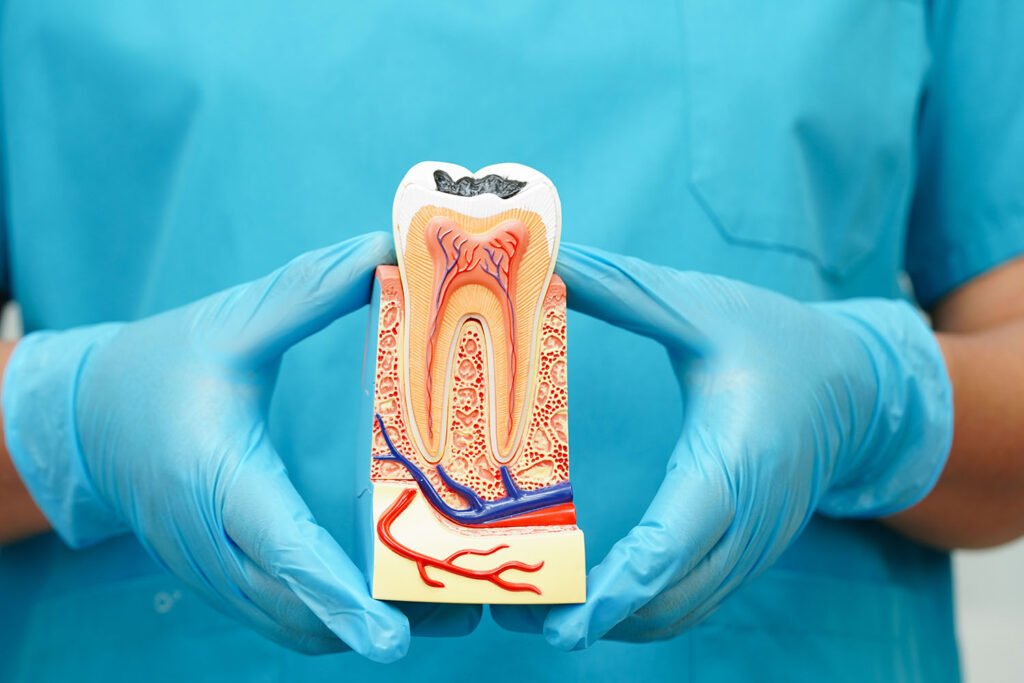Diving Deep: Unraveling the Mystery of Root Canal Treatment

The phrase “root canal” often elicits a shudder, conjuring images of painful, drawn-out procedures. But is this reputation deserved? Let’s demystify root canal treatment and explore why it’s often the key to saving a damaged tooth.
What Exactly Is a Root Canal?
At the heart of every tooth lies the pulp, a soft tissue containing nerves, blood vessels, and connective tissue. This pulp extends from the crown (the visible part of the tooth) down into the root canals, which are tiny channels that run through the tooth’s roots. When the pulp becomes infected or inflamed, often due to deep cavities, cracks, or repeated dental procedures, a root canal treatment becomes necessary.
The Procedure: A Step-by-Step Breakdown
Contrary to popular belief, a root canal is not inherently painful. Modern techniques and local anesthesia ensure a relatively comfortable experience. Here’s what typically happens:
- Anesthesia: The dentist numbs the affected tooth and surrounding area, ensuring you feel minimal discomfort.
- Access: A small opening is created in the crown of the tooth to access the pulp chamber and root canals.
- Cleaning and Shaping: Specialized instruments are used to carefully remove the infected or damaged pulp, cleaning and shaping the root canals.
- Filling: The cleaned root canals are filled with a biocompatible material, usually gutta-percha, to seal them and prevent further infection.
- Restoration: A filling or crown is placed over the tooth to restore its function and strength. This final step is crucial for protecting the treated tooth.
Why is a Root Canal Necessary?
Ignoring an infected pulp can lead to serious consequences, including:
- Severe pain: The infection can cause intense throbbing and discomfort.
- Abscess: A painful pocket of pus can form at the root tip, leading to further complications.
- Bone loss: The infection can spread to the surrounding bone, causing damage and weakening the tooth’s support.
- Tooth loss: In severe cases, the tooth may need to be extracted if the infection is left untreated.
- Systemic infections: In rare cases, the infection can spread to other parts of the body.

The Benefits of Root Canal Treatment
- Pain relief: Eliminates the pain caused by the infected pulp.
- Tooth preservation: Allows you to keep your natural tooth, which is always preferable to extraction.
- Improved oral health: Prevents the spread of infection and protects surrounding teeth.
- Restored function: Enables you to chew and bite normally.
- Aesthetics: a crown placed after a root canal will allow the tooth to maintain its natural appearance.
Addressing the Myths
- Myth: Root canals are painful.
- Reality: Modern anesthesia and techniques make the procedure relatively painless.
- Myth: Root canals are outdated.
- Reality: Root canal treatment is a highly effective and safe procedure that has saved countless teeth.
- Myth: It’s better to extract the tooth.
- Reality: Keeping your natural tooth is almost always the best option. Extractions can lead to other dental problems.
Post-Treatment Care
In Conclusion
After a root canal, you may experience some mild soreness for a few days. Over-the-counter pain relievers can help manage discomfort. Proper oral hygiene, including regular brushing and flossing, is essential for maintaining the health of your treated tooth.
Root canal treatment is a valuable procedure that can save your natural tooth and prevent serious complications. If you’re experiencing tooth pain or suspect you may need a root canal, don’t hesitate to consult Perfect 32 Dental, Ranchi- the best centre for root canal treatment in Ranchi. We can assess your situation and provide the appropriate treatment. By understanding the process and benefits, you can approach root canal treatment with confidence and a smile.